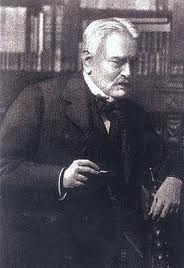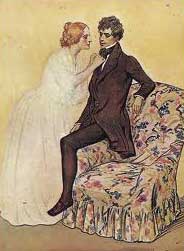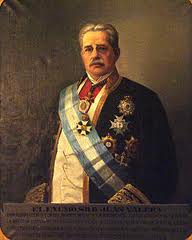Life & works of Juan Valera

Juan Valera y Alcalá-Galiano is one of the most important authors of the Spanish prose written in the second half of the 19th century. Diplomat, writer and critic, Juan Valera was one of the most educated men of his period, and was greatly admired by his contemporaries. He became a novel writer during his fifties, and wrote the most popular novel of the 19th century, "Pepita Jiménez" (1874), which is mostly written as if it were a letter. "Pepita Jiménez" tells the story of a widow who agrees to help the father of a seminarian in keeping his son off his false vocation.
Juan Valera - Life and Works
Juan Valera was born in Córdoba in 1824. He studied philosophy and Spanish language in Malaga between 1837 and 1840, and he continued his studies in Granada during 1841. Afterwards he enrolled in the University of Granada and studied philosophy and law. He started his diplomatic career in Naples, where he met Ángel de Saavedra, Duke of Rivas. He spent two and a half years there, learning Greek, and he also became a good friend of Lucía Paladí, marquise of Bedmar. After his stay in Naples he traveled around Europe and America, and he kept a record of his travels through a collection of letters which was later published in Spain.

He retired from his diplomatic career in 1858 and decided to establish his home in Madrid, where he half-heartedly started a political career. Two years later he explained his "Historia crítica de nuestra poesía" (Critical history of our poetry) in the Ateneo in Madrid, and it was a huge success. In 1861 he married Dolores Delavat in Paris, and in 1862 he was chosen as a member of the Spanish Royal Academy. He worked as an ambassador in Lisbon, Brussels, Vienna and Washington, where he had an affair with Katherine C. Bayard, daughter of the Us Secretary of State. During Juan Valera's last years, as he was turning blind, he held a popular night literary gathering in his house in Madrid.
Juan Valera collaborated in different magazines since his times as a student in Granada, and he was also director of several newspapers and magazines. On top of it all, he founded "El Cócora" and "El Contemporáneo". He cultivated a political and literary career at the same time. Although he's part of the Romantic period, Juan Valera never considered himself a Romantic author but an epicurean, an ironic literate who loved women and sex. His rejection of Realism and Romanticism was caused by the restrictions of these two movements, through which he wasn't able to entirely develop his fantasy in his works. He only used Realism when he chose to write real settings (like his home, Andalusia) or chose more realistic characters, although he always rejected the less appealing aspects of reality.

Juan Valera's works, especially his narrative, mostly revolved around two main topics: love and religion, and the philosophical fight between the two. He understands women and portrays them accurately; in fact, most of the main characters in his books are women. He was of the opinion that the plot of a novel should reflect real life, but never in all its crudeness, but rather as we wished it were, an idealised version. He thought novels were an art form and his aim was to create beauty in his works, and he takes special care in his style, trying to make his works fun to read but never didactic or moralizing. He's also an advocate of literary irony.
His constant travels, even after establishing his house in Madrid, helped him expand his knowledge, and he never stopped studying. Valera was a great literary critic who always acted above the literary trends, focusing his attention only on the quality of the text. He was one of the most educated men of his time, had a prodigious memory and a good knowledge and understanding of the Greco-Roman classics, and he wrote and spoke fluently in Spanish, French, Italian and English.
The most famous work by Juan Valera is still "Pepita Jiménez" which he wrote in 1874. At the time, the novel was translated into 10 different languages and sold over 100,000 copies. Some of his other main works include "Juanita la Larga" and "Genio y Figura".

